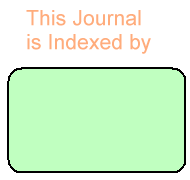For correspondence:- Email: aljedaie@psau.edu.sa
Received: 29 February 2024 Accepted: 12 February 2025 Published: 27 February 2025
Citation: Aljedaie MM, Accidental myiasis caused by housefly (Musca domestica) in Rock Hyrax (Procavia capensis Jayakari) in Saudi Arabia. Trop J Pharm Res 2025; 24(2):175-184 doi: 10.4314/tjpr.v24i2.5
© 2025 The authors.
This is an Open Access article that uses a funding model which does not charge readers or their institutions for access and distributed under the terms of the Creative Commons Attribution License (http://creativecommons.org/licenses/by/4.0) and the Budapest Open Access Initiative (http://www.budapestopenaccessinitiative.org/read), which permit unrestricted use, distribution, and reproduction in any medium, provided the original work is properly credited..
Purpose: To determine the organisms responsible for intestinal infection in rock hyrax (Procavia capensis jayakari), a wild animal in Saudi Arabia, through morphological and molecular characterization. Methods: Intestinal contents obtained from 20 dead rock hyrax were used to confirm the presence of larvae. Larval morphology was examined using stereo-microscopy and scanning electron microscopy (SEM). For molecular characterization, ribosomal 18S rDNA and mitochondrial DNA (mtDNA) gene sequences in larval DNA were amplified by polymerase chain reaction (PCR). Results: Four samples of the intestinal contents of dead rock hyrax showed positive response indicative of larval infection (infection rate 20 %) with a slender and creamy larval structure in rock hyrax intestine. For molecular characterization, from the 20 samples, 11 ribosomal 18S rDNA sequences and six mitochondrial DNA (mtDNA) sequences presented positive polymerase chain reaction (PCR) signals. The gene sequences were used to construct an evolutionary tree with other related sequences available in a gene database. The morphological features and the evolutionary trees were developed based on the above two genes, confirming the resemblance between Musca domestica (Housefly) and larvae in this study. Conclusions: The intestine of rock hyrax is invaded by houseflies. The results obtained could be a first step in understanding the cause of myiasis infection in wild animals. The translational value of these findings raises a serious concern regarding the transmission of this disease in animals with houseflies being the vector for pathogens to enter hosts such as wild animals. This would pose a serious problem in preserving the ecological balance of wild animals in the future.
Archives


News Updates